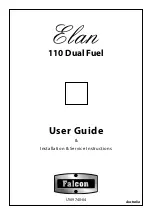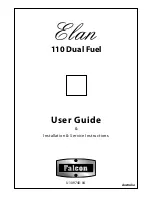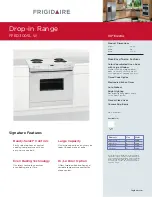
21
CAUTION
Make sure no water comes into contact
with electrical components: water pene-
tration can cause short circuiting and
dissipation, tripping the appliance’s pro-
tection devices.
H.1.6
Induction air filters
• To avoid breakage and damaging the appliance, check and
clean the filter at least once a month; this operation must be
carried out by an authorized technician.
• For cleaning:
– remove the filter from its seat;
– bang it hard to clean off the dust;
– If the filter is dirty with grease, wash it with degreasing
soap, then rinse and dry;
– at the end of the operation, refit the filter in its seat.
Every three months it is advisable to replace the filter if it
has deteriorated.
H.1.7
Periods of non-use
If the appliance is not going to be used for some time, take the
following precautions:
• Close the valves or main switches ahead of the appliances
• Go over all stainless steel surfaces vigorously with a cloth
moistened with paraffin oil in order to create a protective film.
• Periodically air the premises.
• Have the appliance checked before using it again.
• To prevent too rapid evaporation of accumulated moisture
with consequent breakage of elements, switch electric
appliances on at minimum heat for at least 45 minutes
before reuse.
CAUTION
Put the machine in safe conditions before
starting any maintenance operation.
After carrying out maintenance, make sure the machine is able
to work safely and, in particular, that the protection and safety
devices are efficient.
CAUTION
Respect the requirements for the various
routine and extraordinary maintenance
operations;
non-compliance
with
the
instructions can create risks for personnel.
H.1.8
Internal parts (every 6 months)
IMPORTANT
Operations to be carried out only by specialised
personnel.
• Check the condition of the internal parts.
• Remove any deposits of dirt inside the appliance.
• Check and clean the discharge system.
IMPORTANT
In particular conditions (e. g. intensive use of the
appliance, salty environment, etc.) the above
cleaning should be more frequent.
H.2
Warnings
Red light on and green light flashing between two longer
lighting phases requires an initial action by the user and, if
necessary, a more thorough check by Customer Care Service,
(see the table given below).
Each cooking zone has an internal temperature control device
that activates before any overheating, reducing the cooking
zone power.
• If overheating persists, the cooking zone is temporarily
turned off.
• Cooling is quicker if the pot is taken off the glass-ceramic
plate.
• It is advisable to turn the zone off with the control knob and
wait a while.
When cooled, the cooking zone can be switched on again by
turning the control knob from “0“ to the desired setting.
H.3
Warnings codes
Nr. lamp
green led
Warning
Cause
Corrective Action
(User)
Corrective Action
(After-Sales Service)
1
Cooking zone
overtemperature
The zone temperature is
too high
Switch of the power zone
and restart after zone
cooling down
—
Material of pot unsuitable
Use a pot made from
appropriate material
—
2
None
—
—
—
3
Main board IGBT temper-
ature sensor
Dirty air filters
Disconnect the appliance
from the mains and call
the after-sales service
Clean the air filters
Cooling duct obstructed
Make sure the cooling air
inlet and outlet are not
blocked
Ingestion of hot air from
the cooling inlets
Check the cooling air
path
Cooling fan blocked or
faulty
Clean the cooling fan if
problem persist replace
the induction generator
Temperature sensor of
power terminals faulty
Replace the induction
generator
4
Potentiometer error
Disconnection between
the generator and
controls
Disconnect the appliance
from the mains and call
the after-sales service
Check the internal
connections
Potentiometer faulty
Replace potentiometer
5
Main board failure on
+15V power supply
output
Induction generator
failure
Disconnect the appliance
from the mains and call
the after-sales service
Replace the induction
generator






































